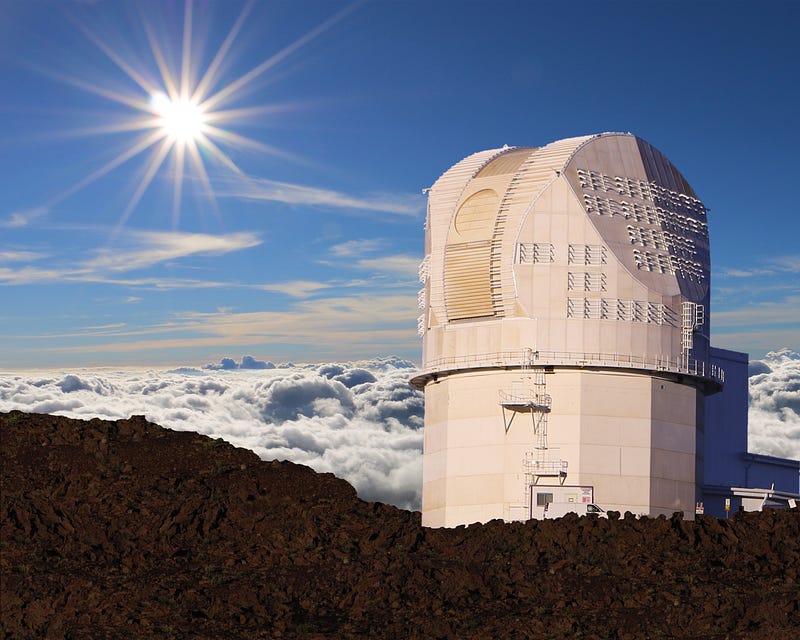Inouye Solar Telescope Unveils Stunning First Images of the Sun
Written on
Chapter 1: Introduction to the Inouye Solar Telescope
Astronomers have recently shared the inaugural public video showcasing the Sun captured by the Daniel K. Inouye Solar Telescope in Hawaii, the world's leading solar observatory. This remarkable footage presents the most intricate visuals of our star to date. The next-generation National Science Foundation (NSF) telescope is capable of revealing surface details as small as 30 kilometers (18 miles) across.

This cutting-edge, four-meter (157-inch) telescope recorded mesmerizing images and videos of the Sun's turbulent plasma, offering an unprecedented level of detail for solar scientists.
“Since NSF embarked on the development of this ground-based telescope, we have eagerly anticipated the first images. NSF’s Inouye Solar Telescope will enable the mapping of magnetic fields within the sun’s corona, where solar eruptions can significantly affect life on Earth. This telescope will enhance our understanding of the mechanics behind space weather, ultimately aiding in the prediction of solar storms,” stated France Córdova, NSF director.
Section 1.1: Understanding Solar Energy
The Sun generates an astounding five million tons of hydrogen into energy every second. This energy travels from the Sun's core to its surface over hundreds of thousands of years, with a fraction reaching Earth eight minutes later. This solar energy fuels terrestrial weather, influences the planet's chemistry, and sustains nearly all life.
Each cell visible in the footage, transferring heat from the Sun's interior to its surface, is roughly the size of Texas. Hot plasma ascends from the center of these cells, cools, and then descends, creating the dark edges seen in the video.

Our comprehension of solar operations and their impact on Earth has evolved. In the 1950s, astronomers identified the solar wind, which permeates the Solar System. Further studies unveiled a fragile outer solar atmosphere extending beyond Earth's orbit.
Section 1.2: The Implications of Space Weather
Space weather, influenced by solar activity, can disrupt conditions on Earth. Solar-generated magnetic forces can lead to storms that interfere with air travel, GPS, cellular communications, and electrical infrastructures. As society grows increasingly reliant on technology, understanding space weather becomes crucial.

“While we can accurately forecast rain in most parts of the world, our ability to predict space weather remains significantly behind—by 50 years or more. To improve our predictions, we must understand the physics behind space weather, starting at the Sun, which is the focus of the Inouye Solar Telescope over the coming decades,” remarked Matt Mountain, president of the Association of Universities for Research in Astronomy, which oversees the telescope.
During Hurricane Irma in 2017, a space weather incident hampered communication systems used by first responders, as well as aviation and maritime channels, complicating emergency efforts just before the storm made landfall.
Chapter 2: The Mechanics of the Inouye Solar Telescope
Located 10,000 feet above the Pacific Ocean atop Haleakalā in Hawaii, the Inouye Solar Telescope boasts optimal viewing conditions for astronomical observation.
The telescope harnesses a total of 13 kilowatts of solar energy during observations, producing substantial heat. This heat is managed through a complex system of seven miles of piping, cooled by ice that forms overnight on the mountain. The dome employs cooling plates and shutters for temperature regulation, while a heat-stop—a liquid-cooled metal ring—blocks most solar heat from reaching the primary mirror.
Advanced technology minimizes atmospheric distortion in the images through the use of an off-axis mirror and state-of-the-art focusing and stabilization electronics, crucial for measuring the Sun's magnetic field effects on space weather. Combined with data from the Parker Solar Probe orbiting the Sun, this telescope is poised to make significant contributions to solar science in the years ahead.
“The sun, with all those planets revolving around it and dependent on it, can still ripen a bunch of grapes as if it had nothing else in the universe to do.” — Galileo Galilei
In 2013, the Advanced Technology Solar Telescope was renamed the Daniel K. Inouye Solar Telescope to honor the late senator from Hawaii, a strong proponent of science and technology.
David Boboltz, program director in NSF’s division of astronomical sciences, claims that the Inouye Solar Telescope will collect more data about the Sun in its initial five years than humanity has gathered since serious solar observations began in 1612.
James Maynard, the founder and publisher of The Cosmic Companion, resides in Tucson with his wife, Nicole, and their cat, Max.
Did you enjoy this article? Subscribe to The Cosmic Companion Newsletter and stay updated on the latest stories!